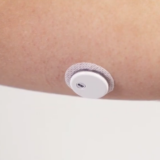The Toyota Corolla hybrid system car combines elegance and efficiency for everyday rides. It is an appealing choice for those looking to combine efficiency, reliability, and modern features.
As one of Toyota’s most iconic models, the Corolla has long been celebrated for its reliability and value. The introduction of the hybrid variant takes a significant leap forward in offering sustainable mobility solutions.
This blog post will explore the multitude of benefits that the Toyota Corolla Hybrid provides, from its impressive fuel economy and advanced hybrid technology to its commitment to safety and comfort.
Hybrid System Elements
The main element of Toyota’s hybrid system is the e-CVT gearbox, which consists of the planetary gear. The planetary gear connects the petrol and two electric motors to the drive shaft. One electric motor serves for the electric drive and charges the battery, while the other manages the power ratio in the planetary gear.
Toyota Hybrids, depending on the model, consist of NiMH or Li-Ion batteries. A classic hybrid car has relatively small batteries located under the passenger seat. They mostly serve only as a braking energy storage system.
This does not make them an adequate substitute for electric cars. This type of car cannot be driven solely on electric power, except for very short distances in some ideal cases. The ideal case would be when you drive the vehicle on a flat road at less than 40 km/h if the battery is full.
However, there is a plug-in hybrid version that includes a much larger battery under the passenger seat and in the trunk. Those batteries can be charged via external chargers, like electric cars. Such a vehicle can be driven entirely as an electric car, and the gasoline engine is only activated due to a low battery level. In a classic hybrid car (not plug-in), the battery is charged exclusively by the gasoline engine, either while moving or braking.
Balancing between electric and gasoline engine
This car determines when it will move on electric and when on gasoline. Starting the vehicle and driving at low speeds is only done on an electric drive. Uphill and higher speeds combine both electric and gasoline drives. This makes driving quieter and significantly reduces pollutant emissions because the gasoline engine is used less often.
Due to the less frequent use of mechanical parts (the gasoline engine and brakes), the need to replace mechanical parts and maintenance is also lower. Although, of course, maintenance is important.
Driving style for optimum results
The optimum driving of a hybrid Toyota is different from that of others with manual and automatic transmissions. This is because of a power threshold after which the gasoline engine is used more often.
This requires the driver to change his driving style in order to take advantage of this type of vehicle’s advantages. For this car, it is more optimal to quickly accelerate to the desired speed (50 km per hour) using a combination of gasoline and electric motors. Briefly lift your foot from the gas pedal to activate only the electric motor, and then press the pedal only as much as is necessary to maintain the speed.
This car is a good option for everyday city driving. Frequent movement and stopping cause significant energy losses in traditional vehicles. In contrast, in hybrids, movement is done by an electric motor, and when stopping, i.e., braking, part of the energy is returned to the battery.
The different driving style is because it uses a special e-CVT transmission that has no gears but is all at one speed. This combination of gasoline and electric engines is optimal, and it also optimizes power and fuel consumption. Thus, the ride becomes smoother and more comfortable, and the power is never lost when changing gears.
Toyota Corolla Hybrid – Fuel Consumption
Due to optimization, fuel consumption is lower than in the best case with a manual or automatic transmission. This is especially useful when slowing down and braking. In those situations, unlike in traditional cars, there is no waste of kinetic energy. That energy is stored in the battery and used later. It is this energy that contributes the most to reducing fuel consumption.
The car consists of an 1800 cm3 petrol engine with 16 valves and a maximum engine power of 121 horsepower. Typical consumption varies depending on the time of year. According to a detailed analysis, consumption from full to empty tank is an average of 5.1 l per 100 km. Fuel consumption is around 5.5 l per 100 km in winter and around 5 l per 100 km in summer. A different situation is in spring and autumn when the consumption is under 5 l per 100 km in combined driving.
The car’s fuel consumption is the lowest on the highway at speeds of 80 km per hour, at 4 l per 100 km. In the city and on the highway, it consumes about 5 l per 100 km, while on hills, it consumes over 6 l per 100 km. It was noticed that consumption is lower for low-octane gasoline than for high-octane gasoline.
Advanced Functions of Toyota Corolla Hybrid
With most new cars, it is also significant that there are built-in new safety functions that make driving more comfortable and safer. One of these is cruise control, which maintains a constant speed on the highway or limits the maximum speed.
However, the automatic lane assist function provides an additional level of cruise control protection. This function automatically keeps the vehicle in the lane by correcting the steering wheel position. This feature uses a built-in camera and only works if the lanes are clearly visible on the road.
The built-in radar constantly measures the distance of the vehicle in front and thus adjusts the speed in accordance with the safe distance. The radar can sound an alarm if it notices that the driver did not brake in time and a vehicle appears in front. This is active even if the cruise control is not active.
By the specifications, the vehicle will brake on its own to avoid an accident, but we did not have the opportunity to test that. In any case, the alarm is often activated when a vehicle suddenly enters your lane.
The functions of the parking sensor are crucial for parallel parking in a narrow space. The vehicle has four parking sensors in the front and rear but none on the sides. There is also a camera that shows what reversing looks like when parking.
Toyota Corolla Hybrid Anti-Rollback Mechanisms
Toyota also has anti-rollback mechanisms for stopping on a hill. It is much more useful that there is an auto-hold function that raises the handbrake automatically when you are tied up and stop by braking. The handbrake is automatically raised when you press the gas pedal. It is inconvenient that the auto-hold must be activated manually when tying. However, you can install a module that activates this function automatically.
The TMPS (Tire Pressure Monitoring System) enables automatic tire pressure control, making driving more comfortable and fuel consumption more optimized. This model also has a function for automatic mirror folding, which is important for parking in tight spaces.
Contactless sensors (lock) on the door lock and unlock the vehicle. When the lock is touched, the car talks to the key to check if it is nearby. This allows the car to be opened and started while the key is nearby without having to be removed. However, the key must still be in the vehicle or next to the car for use.
There is a safety restriction that the car cannot be locked from the outside if the key is in the car. That way, there is no chance that the key will remain in the locked car.
Toyota Corolla Hybrid Application
The Toyota Corolla Hybrid comes with Toyota cloud services that enable certain car smart functions. Those smart functions use the built-in modem and SIM card to allow the vehicle to be in constant contact with the Toyota cloud. Toyota bears all costs of that communication for the first ten years.
The Android application offers the possibility of obtaining certain information about the condition of the car. Some of them are:
- Information about the total mileage,
- Tank condition,
- The doors are locked or windows closed,
- GPS coordinates and statistics for each trip,
- Location of the car (data is updated after the vehicle is turned off)
GPS road log shows some statistics:
- Traveled distance,
- Travel time,
- Average speed,
- Average consumption,
- How long the car is driven on electric power,
- Rating of driving optimization in relation to the most economical mode
These statistics help to make the most of the economy of the vehicle and learn what suits the car best.
Within the application, there is a system for records and a reminder when the vehicle needs to be serviced. There is an option for online scheduling at authorized Toyota service centers.
The application shows warnings that you would otherwise receive in the car (errors in the engine, tires, or other systems). The Corolla does not have remote control systems (locking, unlocking, air conditioning, etc.).
For the 41,000 km, the only problem was the failure of one of the TPMS sensors in the tire. It was also necessary to visit the service center for an emergency inspection of the withdrawn parts of the new vehicle. The warranty covered this service. The major maintenance cost expected for this type of vehicle is battery replacement after ten years of use.
Conclusion
The overall impression is that this is a very interesting vehicle to drive because it is different from other cars. Given that we previously used a car with a manual transmission, it was expected that driving such a car would be boring. We expected that due to the absence of manual transmission. On the contrary, the uniqueness of this vehicle made driving even more interesting, especially in terms of optimizing the use of electric and gasoline engines.
The Toyota Corolla is available in both a gasoline version and a hybrid version. The hybrid system is ten percent more expensive than the identical gasoline system. That difference in price may justify the difference in economy. It depends on how much the vehicle is used. If the vehicle is used as a taxi vehicle in urban conditions, profitability is achieved after a few years of use. However, if the vehicle is used infrequently and on the highway, profitability is more likely to be achieved in the first five years.
The plug-in hybrid is ten percent more expensive than the regular hybrid. However, it may be more worthwhile if there are conditions to charge the car at home as an electric car. In contrast, the question is whether it would ever pay for itself compared to the gasoline-powered variant. The plug-in variant is still the best solution, but for now, in Serbia, there are no conditions for this type of vehicle to be used economically (lack of charging stations, hilly terrain).
*This blog post is written with the help of Paxy.









